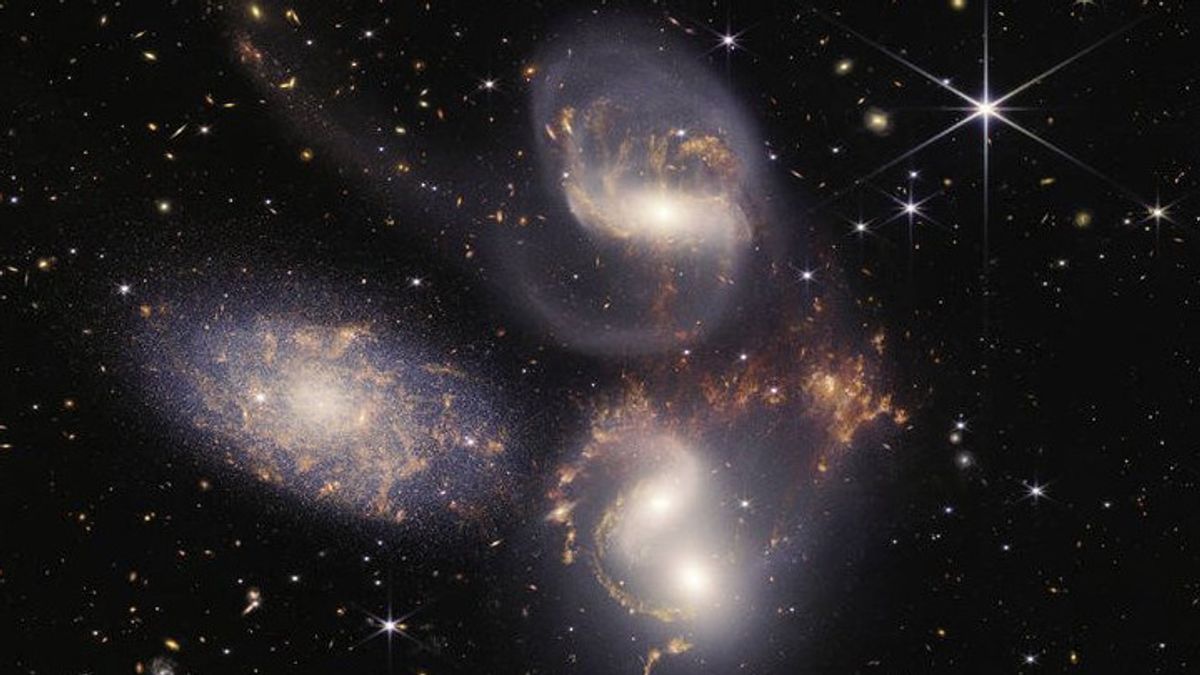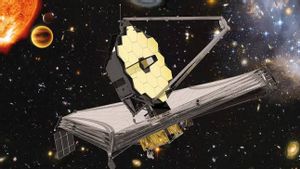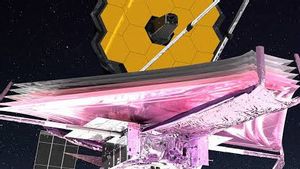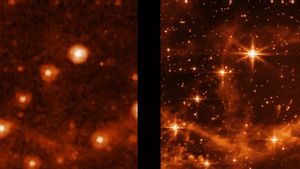JAKARTA - The inaugural collection of the powerful James Webb Space Telescope images has opened a new chapter of cosmic exploration. But astronomers say the observatory's most important discoveries may be ones they haven't imagined.
Faraway colliding galaxies, gas-giant exoplanets, and dying star systems were the first celestial subjects to be captured by the billion-dollar observatory. It also puts its wide range of infrared imaging capabilities on a colorful display and proves that the telescope works as designed.
Webb's gallery of early photographs and spectrographic data, which astronomers liken to a mere "target practice" as they prepare telescopes for operational science, also showcases some of the areas of investigation planned for the future.
Yesterday's photos from across the universe inspired awe and wonder around the Earth.
Take a look back at how the world responded to the first full-color images from @NASAWebb: https://t.co/trQvd4Z8WX
— NASA (@NASA) July 13, 2022
The competitively selected research agenda includes exploring the evolution of early galaxies, stellar life cycles, the search for habitable planets orbiting distant suns, and the composition of moons in our own outer solar system.
The Webb telescope is 100 times more sensitive than its 30-year-old predecessor, the Hubble Space Telescope, which is still in operation. Although still relatively new in operation, the most revolutionary findings of the Webb telescope may be accidental discoveries or answers to questions that have not been asked by astronomers.
"Who knows what will come for JWST. But I'm sure we will have a lot of surprises", René Doyon, principal investigator for one of Webb's instruments, the Near-Infrared Imager and Slitless Spectrograph, said Tuesday at NASA's Goddard.
Space Flight Center in Maryland, where the agency released the observatory's first full-color image.
Webb is open for business seven months after its launch in December. "Now astronomers are preparing for something out there that we never thought would exist at all", said John Mather, a senior astrophysicist. Mather is a Nobel Prize winner who worked at NASA during the 1990s to help strengthen the theory of 'Big Bang' cosmology.
Mather and other scientists point to dark matter, an invisible and little understood but theoretically influential cosmic scaffold, as a puzzle that Webb may have unlocked during his mission.
Hubble, too, opened up a new field of astrophysics devoted to another mysterious phenomenon, dark energy, as his observations of supernovae led to the unexpected discovery that the universe is expanding rapidly.
Taken together, dark energy and dark matter are now estimated by scientists to cover 95% of the known universe. All galaxies, planets, dust, gas, and other visible matter in the universe comprise only 5%.
"It was a big surprise", Mather said of the beginning of dark matter and the discovery of dark energy.
"It's hard to imagine what we might learn with this one hundred times more powerful instrument that we really don't know about", said Amber Straughn, deputy project scientist who worked with Webb.
Dark matter is already prominent in Webb's first "deep field" image, a composite photo of the distant galaxy cluster, SMACS 0723, which offers the most detailed view to date of the early universe thanks to a magnifying effect called gravitational lensing.
The combined mass of galaxies and other invisible matter in the foreground of the image bends the surrounding space enough to amplify light coming from galaxies farther behind them, carrying the fainter visible objects further away, and thus further into the past.
SEE ALSO:
At least one of the specks of "photo bomb" light at the edges of the image date back 13.1 billion years, or nearly 95% of the journey to the Big Bang, the theoretical cosmic flashpoint that put the universe in motion 13.8 billion years ago.
But because the calculated combined mass of all visible matter in the foreground is not sufficient on its own to produce the faint circular distortion seen in the image, the lensing effect is strong indirect evidence of the existence of dark matter.
"This is the most powerful tool we have, astrophysically, for conducting this type of lens experiment", said Jane Rigby, Webb's operations project scientist. "We can't directly detect dark matter, but we see its effects ... we can see its effects in action."
"The universe is already out there, we just need to build a telescope to see what's out there", he added.
The new light also emerged unexpectedly from Webb's first spectrographic analysis of an exoplanet in a distant solar system, in this case, a gas giant Jupiter-sized planet dubbed WASP-96 b.
Measuring the wavelength of the light filtered through the exoplanet's atmosphere as it orbits its own sun clearly reveals molecular signatures of water vapor in clouds and fog, a feature scientists have discovered.
"There is a discovery in this data", said Webb program scientist Eric Smith. "We made a discovery and we really haven't started trying."
The English, Chinese, Japanese, Arabic, and French versions are automatically generated by the AI. So there may still be inaccuracies in translating, please always see Indonesian as our main language. (system supported by DigitalSiber.id)













